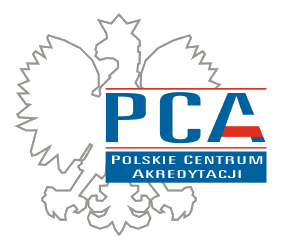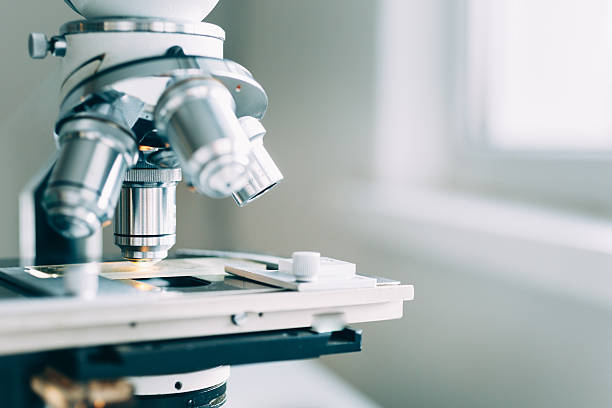Laboratory profile
Lab-test Laboratorium S.C. is a microbiological contract laboratory based in Katowice, Poland. Since 1996 we have been doing tests, assays and studies in the area of industrial microbiology.
We specialize in testing biocidal activity of chemical disinfectants and antiseptics, the kind of assays which are necessary, for example, in the European Biocide Registration process. Our Laboratory is accredited at
 Polish Centre for Accreditation
Polish Centre for Accreditationto confirm the compliance with the EN ISO/IEC 17025 standard, which specifies general requirements for the competence of testing laboratories. We are accredited at the Polish Centre for Accreditation, PCA, with the Accreditation Scope No AB 815.
We always take the customer’s requirements as the starting point in our enterprise – we do our best to determine the testing options and possibilities adequate to our clients’ needs. The time it takes to do the testing itself depends always on the current workload, but the basic deadline we offer is 4 weeks, since the preliminary paperwork has been completed (unless, of course, the testing itself extends over the considerable period of time, which is the case with some assays).
Accreditation No AB 815
Biocidal Product Types and their descriptions according to Annex V to Regulation (EU) No 528/2012
We do tests and assays on products belonging to the following categories:
|
No |
Category |
Description |
|
MAIN GROUP 1: Disinfectants These product-types exclude cleaning products that are not intended to have a biocidal effect, including washing liquids, powders and similar products. |
||
|
Product-type 1 |
Human hygiene |
Products in this group are biocidal products used for human hygiene purposes, applied on or in contact with human skin or scalps for the primary purpose of disinfecting the skin or scalp. |
|
Product-type 2 |
Disinfectants and algaecides not intended for direct application to humans or animals |
Products used for the disinfection of surfaces, materials, equipment and furniture which are not used for direct contact with food or feeding stuffs. Usage areas include, inter alia, swimming pools, aquariums, bathing and other waters; air conditioning systems; and walls and floors in private, public, and industrial areas and in other areas for professional activities. Products used for disinfection of air, water not used for human or animal consumption, chemical toilets, waste water, hospital waste and soil. Products used as algaecides for treatment of swimming pools, aquariums and other waters and for remedial treatment of construction materials. Products used to be incorporated in textiles, tissues, masks, paints and other articles or materials with the purpose of producing treated articles with disinfecting properties. |
|
Product-type 3 |
Veterinary hygiene |
Products used for veterinary hygiene purposes such as disinfectants, disinfecting soaps, oral or corporal hygiene products or with anti-microbial function. Products used to disinfect the materials and surfaces associated with the housing or transportation of animals. |
|
Product-type 4 |
Food and feed area |
Products used for the disinfection of equipment, containers, consumption utensils, surfaces or pipework associated with the production, transport, storage or consumption of food or feed (including drinking water) for humans and animals. |
|
Product-type 5 |
Drinking water |
Products used for the disinfection of drinking water for both humans and animals. |
|
MAIN GROUP 2: Preservatives Unless otherwise stated these product-types include only products to prevent microbial and algal development. |
||
|
Product-type 6 |
Preservatives for products during storage |
Products used for the preservation of manufactured products, other than foodstuffs, feedingstuffs, cosmetics or medicinal products or medical devices by the control of microbial deterioration to ensure their shelf life. Products used as preservatives for the storage or use of rodenticide, insecticide or other baits. |
|
Product-type 11 |
Preservatives for liquid-cooling and processing systems |
Products used for the preservation of water or other liquids used in cooling and processing systems by the control of harmful organisms such as microbes, algae and mussels. Products used for the disinfection of drinking water or of water for swimming pools are not included in this product-type. |
|
Product-type 12 |
Slimicides |
Products used for the prevention or control of slime growth on materials, equipment and structures, used in industrial processes, e.g. on wood and paper pulp, porous sand strata in oil extraction. |
Accreditation No AB 815
We perform tests and assays to determine biocidal activity according to standards belonging to ISO category 11.080.20 – Disinfectants and antiseptics:
|
Standard designation |
Scope |
|
Chemical disinfectants and antiseptics. Quantitative suspension test for the evaluation of bactericidal activity. |
|
|
Chemical disinfectants and antiseptics. Quantitative suspension test for the evaluation of fungicidal or yeasticidal activity. |
|
|
Chemical disinfectants and antiseptics. Quantitative non-porous surface test for the evaluation of bactericidal and/or fungicidal activity. |
|
|
Chemical disinfectants and antiseptics. Quantitative suspension test for the evaluation of bactericidal activity. |
|
|
Chemical disinfectants and antiseptics. Quantitative suspension test for the evaluation of fungicidal or yeasticidal activity. |
|
|
Chemical disinfectants and antiseptics. Quantitative surface test for the evaluation of bactericidal activity. |
|
|
Chemical disinfectants and antiseptics. Quantitative surface test for the evaluation of fungicidal or yeasticidal activity. |
|
|
Chemical disinfectants and antiseptics. Quantitative surface test for the evaluation of bactericidal activity. |
|
|
Chemical disinfectants and antiseptics. Quantitative suspension test for the evaluation of bactericidal activity. |
|
|
Chemical disinfectants and antiseptics. Quantitative suspension test for the evaluation of fungicidal or yeasticidal activity. |
|
|
Chemical disinfectants and antiseptics. Quantitative carrier test for the evaluation of bactericidal activity. |
|
|
|
Chemical disinfectants and antiseptics. Quantitative carrier test for the evaluation of fungicidal or yeasticidal activity. |
|
|
Chemical disinfectants and antiseptics. Hygienic handwash. |
|
Chemical disinfectants and antiseptics. Hygienic handrub. |
|
|
Chemical disinfectants and antiseptics. Surgical hand disinfection. |
|
|
Chemical disinfectants and antiseptics. Quantitative suspension test for the evaluation of basic bactericidal activity. |
|
|
Chemical disinfectants and antiseptics. Quantitative suspension test for the evaluation of basic fungicidal or basic yeasticidal activity. |
Other tests and assays
Tested property (type of biocidal activity assayed)
- We perform tests and assays to determine biocidal activity according to standards belonging to ISO category 11.080.20 – Disinfectants and antiseptics, under the nonstandard test conditions, specified by the customer.
- Preservation efficiency test (Challenge test), according to Pharmacopoeia or to PN-EN ISO 11930:2019-03 ‘Evaluation of the antimicrobial protection of a cosmetic product’
- Tests and assays to determine the antimicrobial activity of disinfectant cleaners according to the agreed test method and requirements.
- Testing of products for chemo–thermal laundry disinfection.
- Testing of chemical disinfectants / antiseptics according to any other test method for effectiveness evaluation, proposed by the customer or devised to assay the effectiveness in the specific nonstandard applications.
- Determination of changes in the microbial resistance
- Determination of MIC (minimum inhibitory concentration)
- Comparative eficiency tests for groups of products according to agreed / specified cryteria.
Test methods
- European standards:
Standard designation
Scope
Chemical disinfectants and antiseptics. Quantitative test method for the evaluation of bactericidal and yeasticidal activity.
Chemical disinfectants and antiseptics. Chemical-thermal textile disinfection.
Chemical disinfectants. Quantitative suspension test for the evaluation of sporicidal activity.
Chemical disinfectants. Quantitative suspension test for the evaluation of virucidal activity against bacteriophages.
Chemical disinfectants and antiseptics. Quantitative suspension test for the evaluation of bactericidal activity against Legionella.
Chemical disinfectants and antiseptics. Basic sporicidal activity.
Cosmetics. Microbiology. Evaluation of the antimicrobial protection of a cosmetic product.
Cosmetics. Microbiology. Enumeration and detection of aerobic mesophilic bacteria.
Cosmetics. Microbiology. Detection of Staphylococcus aureus.
Cosmetics - Microbiology - Detection of Pseudomonas aeruginosa.
Cosmetics - Microbiology - Detection of Escherichia coli.
Cosmetics - Microbiology - Detection of Candida albicans.
Cosmetics - Microbiology - Enumeration of yeast and mould.
Measurement of antibacterial activity on plastics and other non-porous surfaces
Textile fabrics - Determination of antibacterial activity - Agar diffusion plate test
Textiles - Determination of antibacterial activity of textile products
Testing of textiles - Evaluation of the action of microfungi
Chemical disinfectants and antiseptics. Methods of airborne room disinfection by automated process
- US (ASTM) and other standards:
Standard designation
Scope
Standard Practice for Evaluation of Microbicides Used in Cooling Water Systems.
Standard Test Method for Evaluation of the Effectiveness of Health Care Personnel Handwash Formulations.
Standard Test Method for Evaluation of Laundry Sanitizers and Disinfectants
Standard Test Method for Efficacy of Slimicides for the Paper Industry – Bacterial and Fungal Slime.
Standard Practice for Evaluation of Antimicrobials in Liquid Fuels Boiling Below 390 °C
Standard Test Method for Determining the Antimicrobial Activity of Immobilized Antimicrobial Agents Under Dynamic Contact Conditions.
Standard Test Method for Assessment of Antimicrobial Activity for Water Miscible Compounds Using a Time-Kill Procedure
ASTM WK 32908
Standard Test Method for Quantitative Petri Plate Method (QPM) for Determining the Effectiveness of Antimicrobial Towelettes.
Antibacterial Finishes on textile Materials: Assessment of.
TM147-TM 147 Antibacterial Activity: Parallel Streak Method
Standard NF T72-281
Determination of bactericidal, fungicidal, sporicidal activity for aerial surface disinfection processes.
- Polish National Institute of Public Health – National Institute of Hygiene (NIPH – NIH) methods:
Standard designation
Scope
PZH DF 01/03:2003.02.07
Bactericidal/fungicidal surface test; medical area; chemo-thermal disinfection.
PZH DF 02/03:2003.02.07
Bactericidal/fungicidal surface test for Aerosols & Sprays.
PZH DF 04/03:2003.02.07
Chemical laundry disinfection.
PZH DF 05/03:2003.02.07
Chemothermal laundry disinfection.
- EPA test methods::
Standard designation
Scope
AOAC Use Dilution Method for Testing Disinfectants.
Germicidal Spray Products as Disinfectants (GSPT): Testing of Staphylococcus aureus, Pseudomonas aeruginosa, and Salmonella enterica.
Disinfectant Towelette Test: Testing of Staphylococcus aureus, Pseudomonas aeruginosa, and Salmonella enterica.
Sporicidal Activity of Disinfectants Test (Bacillus ,Porcelain component only).
Neutralization Confirmation Procedures for the AOAC Use-dilution method (UDM), the AOAC Germicidal Spray Products as Disinfectants Test (GSPT) and the Disinfectant Towelette Test (DTT).
Quantitative Three Step Method for Measuring the Efficacy of Liquid Sporicides against Spores of Bacillus subtilis on Hard Non-porous and Porous Surfaces.
Neutralization of Microbicidal Activity using the OECD Quantitative Method for Evaluating Bactericidal Activity of Microbicides Used on Hard, Non-Porous Surfaces.
Germicidal and Detergent Sanitizing Action of Disinfectants Test.
Production of Spores of Clostridium difficile for Use in the Efficacy Evaluation of Antimicrobial Agents.
Quantitative Disk Carrier Test Method (QCT-2) Modified for Testing Antimicrobial Products Against Spores of Clostridium difficile (ATCC 43598) on Inanimate, Hard, Non-porous Surfaces.
Quantitative Petri Plate Method (QPM) for Determining the Effectiveness of Antimicrobial Towelettes Against Spores of Clostridium difficile (ATCC 43598) on Inanimate, Hard Non-porous Surfaces.
Quantitative Petri Plate Method (QPM) for Determining the Effectiveness of Antimicrobial Towelettes Against Vegetative Bacteria on Inanimate, Hard, Non-porous Surfaces.
OECD Quantitative Method for Evaluating the Efficacy of Liquid Antimicrobials against Candida auris on Hard, Non-Porous Surfaces.
Neutralization Confirmation for Evaluating the Efficacy of Liquid Antimicrobials against Candida auris using the OECD Quantitative Method on Hard, Non-Porous Surfaces.
- Algicidal / algistatic activity:
Standard designation
Scope
Water quality. Fresh water algal growth inhibition test with unicellular green algae.
LB-gl-1
Algistatic activity, (Lab-test developed proprietary test method, recognized by Polish Biocidal Products Registration Board).
LB-gl-2
Algicidal activity, (Lab-test developed proprietary test method, recognized by Polish Biocidal Products Registration Board).








